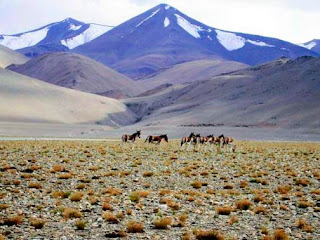In an area of approximately 89 Kms sprawls the immensely captivating Silent valley. Enjoying the blessed location of the mesmerizing Kundali hills, the beautiful Silent Valley is one of the popular tourist destinations in India. As one moves along the Western Ghats in Kerala one will come this mesmeric location. People believe that silent valley is probably the last unsoiled tropical evergreen forest region of India which is immensely rich in Biodiversity. The lush green backdrops, rolling slopes, steep mountain ranges, award the silent valley as one of the most scenic locations in India. But mind it, this is not all, an attraction of the place worth noting is the Silent Valley National Park. This is an interesting tourist place preserving which preserves some of the rare wildlife species within. The plantation of unique herbs and rare variety of plants that are seen here are absolutely awe inspiring. Let us have a look at what all does the Silent Valley holds in store to keep the tourists busy. The wildlife sanctuary of silent valley is a popular tourist attraction of the place If you are an absolute freak of nature and wildlife then a place you must visit is the wildlife sanctuary of silent valley. This colossal sanctuary is popular by the name of 'Sairandhrivanam', meaning the valley forest. The region is called a biodiversity area and is blessed with four different types of vegetations namely, the tropical evergreen rain boon to the wildlife here. One can find species like wild boar, elephant, gaur, tiger, sambhar, Leopard, etc. in the valley forests. Some of the really rare and endangered species like lion tailed macaque are also found here. Amphibian species like lizards, snakes, etc too are easily found here. Some of the places close to the Silent Valley Wildlife Sanctuary Just a few miles away from the Silent Valley National Park lays the Coonoor Hill Resort. It is a town where rapid growth has been observed in almost all the sectors. Again one can spot rich wildlife in this area. Some of the major wildlife sanctuaries such as The Choolanur Peacock Sanctuary, JP Smriti Vanam, The Attapadi, The Parambikulam, etc. are here to keep the tourists busy. In all, if you are a complete nature freak then you cannot find a place better than the Silent Valley. Here you can get great accommodations ranging from the very affordable rest houses, guest houses and luxury hotels. The best part is the climate of the place which is warm in the summer months and cool in the winter months, so there are no specific time intervals between which you should plan a trip to the destination. Last but not the least the place is easily accessible by all means of transport that is air, road and railways. So, plan a trip to this exciting destination and bag for yourself some memories to cherish for lifetime. One of the places of immense tourist interest in Silent Valley is the Tropical Rainforests. This is the place which is holds the highest degree of risk when it comes to habitats of mankind but just contrary to the situation, it is a place known to be the richest habitat for the wildlife of the region. This is particularly the area which sees the highest level of rainfall. Basically this is place which in true manner can be called a destination left untouched by mankind. It can be called one of the most unique tropical rainforest reserves. The pristine glory that the place bears is an evidence of its unsoiled ecological history. The area flaunts its flora and fauna in an area of about 90 Sq. Kms having an altitude of nothing less than 2000. It can also be called one of the rare shola forests of India. The tropical rainforests, dense plantations, heavy rainfall, remoteness of the area and sparse population make it ideal place for a relaxing and soothing holiday. Most of the people living around here are tribal and Kerala Govt has given them separate place of work and also provided small hut for there living and even now if you visit there, you can see them typically dressed up in their style. Silent Valley .View from the watch tower at Sairandhiri is panoramic and the entire valley below appears to be a wavy green enormous carpet. A silver line that runs through is the Kunthipuzha. The interpretation centre at Sairandhiri imparts information on various rare species of orchids, plants and animals.Kunthipuzha is a 2 km down hill trek over a suspension bridge. With FRESH ELEPHANT DUNG strewn around on the path leading to Kunthipuzha, it is the nearest one can get to wild elephants. Lone male tuskers are a dangerous proposition as can be judged from the frenzied paths they pave through thick plants.
MORE IMAGES









